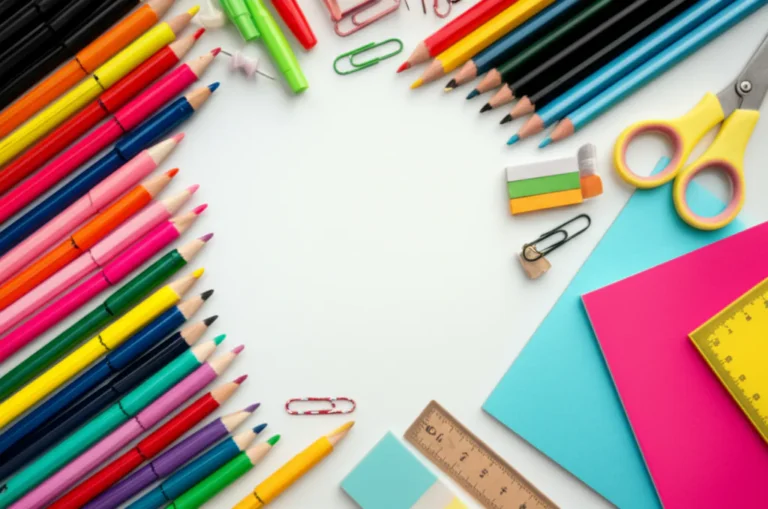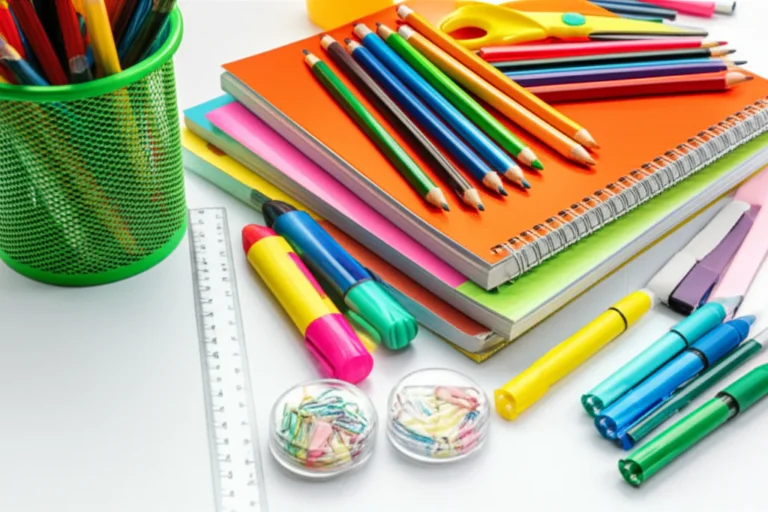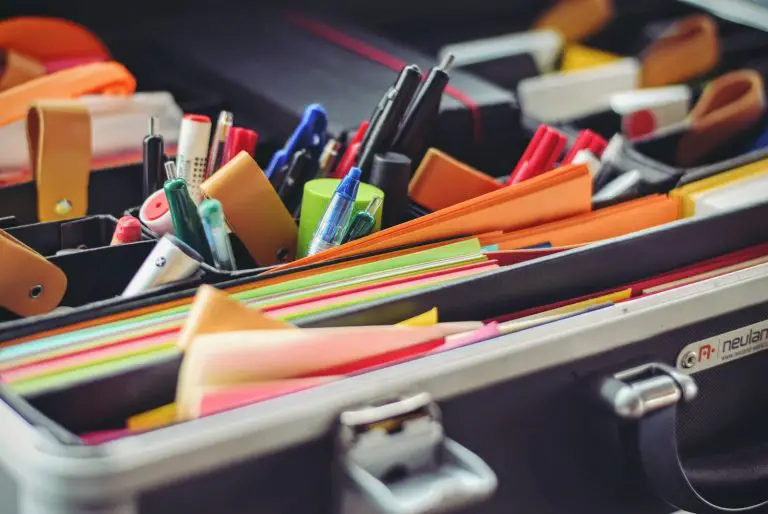Support our educational content for free when you purchase through links on our site. Learn more
How Many Students Can’t Afford School Supplies? 7 Shocking Facts (2025) 🎒
Imagine walking into a classroom on the first day of school with no pencil, no notebook, and no backpack—just your hopes and dreams. For over 16 million students in the U.S., this is a harsh reality every year. While many of us take school supplies for granted, a staggering one in four students can’t afford the basics they need to learn and succeed. But how deep does this crisis go, and what can we do about it?
In this article, we’ll uncover 7 shocking facts about school supply insecurity, reveal the hidden costs behind back-to-school lists, and share inspiring stories of teachers and communities stepping up. Plus, we’ll explore practical ways you can help bridge the gap—from donating supplies to supporting innovative tech solutions. Ready to discover how you can make a difference? Let’s dive in!
Key Takeaways
- Over 16 million U.S. students lack essential school supplies, impacting their academic performance and self-esteem.
- Teachers often spend hundreds of dollars out of pocket to fill supply gaps, highlighting systemic funding issues.
- The true cost of back-to-school lists goes beyond paper and pens, including brand pressures and extracurricular expenses.
- Community programs like Kids in Need Foundation and United Way’s Stuff the Bus are making a real impact.
- Technology and inclusive school policies can help reduce financial burdens and improve access to learning tools.
- You can help by donating supplies, volunteering, or supporting nonprofits focused on educational equity.
Ready to support students and teachers? Explore our Classroom Supplies and Office Supplies collections to find quality products that make a difference!
Table of Contents
- Quick Tips and Facts About Students Who Can’t Afford School Supplies ✏️📚
- The Hidden Crisis: Why Millions of Students Lack Basic School Supplies 💔
- The True Cost of Back-to-School Lists: More Than Just Paper and Pens 💸📝
- How Many Students Can’t Afford School Supplies? Shocking Stats and What They Mean 📊😲
- The Impact of Supply Shortages on Student Performance and Confidence 🎒📉
- Teachers to the Rescue: When Educators Fill the Supply Gap 🦸♀️🦸♂️
- How You Can Help: Donating School Supplies and Supporting Students in Need 🎁🤝
- Feeding Minds and Bodies: Supporting Students with Food Supplies 🍎🥪
- Community Programs and Nonprofits Making a Difference in School Supply Access 🌟🏫
- Innovative Solutions: Tech and Tools to Bridge the Supply Gap 📱🖍️
- How Schools Can Create Inclusive Supply Policies to Ease Financial Burdens 🏫💡
- The Ripple Effect: Long-Term Consequences of Supply Insecurity on Education 🎓🌍
- Quick Tips for Parents and Guardians to Manage School Supply Costs 💡👨👩👧👦
- Conclusion: Turning the Tide on School Supply Insecurity Together 🤝✨
- Recommended Links for Further Reading and Support 🌐📚
- FAQ: Your Burning Questions About School Supply Affordability Answered ❓📝
- Reference Links: Trusted Sources Behind the Stats and Stories 🔗📖
Quick Tips and Facts About Students Who Can’t Afford School Supplies ✏️📚
It’s heartbreaking to think about, but millions of children in the United States don’t have access to the basic school supplies they need to learn and thrive. 🤯 This isn’t just about fancy folders or trendy backpacks; we’re talking about essential items like pencils, notebooks, and even basic hygiene products.
Here are some quick facts to help you understand the scope of this issue:
- 1 in 4 students in the U.S. cannot afford school supplies. 😲 Source: United Way
- Teachers often spend hundreds of dollars out of their own pockets to buy supplies for their students. 😔 Source: CNN
- Lack of supplies can negatively impact student performance, self-esteem, and even attendance. 📉 Source: United Way
Do you know a teacher who has had to buy supplies for their students? We’d love to hear your stories in the comments below! 👇
The Hidden Crisis: Why Millions of Students Lack Basic School Supplies 💔
The reality is that many families struggle to afford even the most basic necessities, let alone the ever-growing list of school supplies. This is a complex issue with many contributing factors, including:
- Poverty: The number of children living in poverty in the U.S. is staggering. Source: U.S. Census Bureau
- Rising Costs: The cost of living, including school supplies, has been steadily increasing. Source: Bureau of Labor Statistics
- Lack of Awareness: Many people are unaware of the extent of this problem, making it harder to address.
It’s important to remember that this isn’t just a “back-to-school” issue. Students need supplies throughout the entire school year, and lack of access can have a lasting impact on their education and future.
The True Cost of Back-to-School Lists: More Than Just Paper and Pens 💸📝
Back-to-school lists can seem overwhelming, even for families with ample resources. But for families struggling to make ends meet, these lists can feel like an impossible burden.
Here’s a breakdown of the hidden costs that go beyond the obvious:
- Brand Name Pressure: Many lists specify specific brands, which can be more expensive than generic options.
- Quantity Demands: Lists often require multiple sets of supplies, which can add up quickly.
- Extracurricular Costs: Beyond basic supplies, there are often costs associated with extracurricular activities, field trips, and school events.
It’s no wonder that many parents feel stressed and overwhelmed by the financial burden of back-to-school. This is a real issue that needs to be addressed.
How Many Students Can’t Afford School Supplies? Shocking Stats and What They Mean 📊😲
The numbers are staggering: millions of students across the U.S. lack access to the basic supplies they need to succeed in school.
Here are some shocking statistics that highlight the severity of this issue:
| Statistic | Number | Percentage |
|---|---|---|
| Students in the U.S. who cannot afford school supplies | 16M | 25% |
| Students in the U.S. who come from low-income families | 24M | 48% |
| Students who receive free or reduced-price lunch | 30M | 48% |
| Students who live in extreme poverty and lack money for school supplies | 15M | 24% |
These numbers paint a clear picture: school supply affordability is a widespread problem that affects millions of students.
What does this mean for students? It means that they may:
- Fall behind academically: Without basic supplies, students may struggle to complete assignments and participate in class.
- Feel ashamed and embarrassed: Students who lack supplies may feel different from their peers and may be reluctant to ask for help.
- Be more likely to drop out of school: Students who are struggling financially may be more likely to drop out of school to help support their families.
The lack of school supplies is not just a minor inconvenience; it’s a serious issue that can have a profound impact on a student’s life.
The Impact of Supply Shortages on Student Performance and Confidence 🎒📉
It’s easy to underestimate the impact of a missing pencil or a worn-out notebook. But for students who lack basic supplies, the consequences can be far-reaching and detrimental to their learning experience.
- Academic Performance: Students without supplies may struggle to complete assignments, take notes effectively, or participate in hands-on activities. This can lead to lower grades, decreased motivation, and a sense of falling behind.
- Self-Esteem: Lack of supplies can make students feel ashamed and embarrassed, leading to a decrease in self-confidence and a reluctance to engage in class.
- Social Stigma: Students who lack supplies may be teased or ostracized by their peers, further exacerbating feelings of inadequacy and isolation.
- Attendance: Students who are struggling financially may be more likely to miss school due to factors like lack of transportation or clothing.
The lack of basic supplies can create a vicious cycle of academic struggles, social isolation, and decreased motivation. It’s crucial to address this issue to ensure that all students have the opportunity to succeed.
Teachers to the Rescue: When Educators Fill the Supply Gap 🦸♀️🦸♂️
Teachers are often the first line of defense when it comes to ensuring that students have the supplies they need. They go above and beyond, spending their own money and time to provide for their students.
- Out-of-Pocket Spending: Many teachers spend hundreds of dollars each year on supplies for their students, often exceeding their small stipends.
- Creative Solutions: Teachers get creative, finding ways to collect donations, organize supply drives, and even use their own personal supplies to fill the gaps.
- Emotional Support: Teachers provide emotional support to students who are struggling financially, helping them to feel valued and supported.
Teachers are true heroes, but they shouldn’t have to shoulder this burden alone. We need to work together to create a system where all students have access to the supplies they need.
How You Can Help: Donating School Supplies and Supporting Students in Need 🎁🤝
There are many ways you can help address the issue of school supply affordability. Here are a few ideas:
- Donate Supplies: Consider donating new or gently used school supplies to local organizations that support students in need.
- Volunteer Your Time: Volunteer at a local school or community center to help with supply drives or other initiatives.
- Support Nonprofits: Donate to organizations that provide school supplies and other resources to students in need.
Even small acts of kindness can make a big difference in the life of a child.
Here are some organizations that are making a difference:
- Kids in Need Foundation: Provides free supplies to teachers through resource centers in 43 cities. Kids in Need Foundation
- Blessings in a Backpack: Provides backpacks filled with non-perishable food for children to take home on weekends. Blessings in a Backpack
- United Way: Runs the “Stuff the Bus” initiative, which mobilizes communities to donate school supplies and backpacks. United Way
Together, we can ensure that all students have the tools they need to succeed.
Feeding Minds and Bodies: Supporting Students with Food Supplies 🍎🥪
The need for school supplies often goes hand-in-hand with food insecurity, which can have a devastating impact on a child’s ability to learn and thrive.
- Weekend Hunger: Many children rely on school meals for their primary source of nutrition, but these programs don’t cover weekends. This leaves a “65-hour gap” where children may have little or nothing to eat. Source: Blessings in a Backpack
- Impact on Learning: Hunger can impair a child’s concentration, focus, and ability to learn. It can also lead to behavioral problems and absenteeism.
Here’s how you can help address food insecurity among students:
- Donate to Food Banks: Support local food banks that provide meals to families in need.
- Volunteer at Food Pantries: Donate your time to help pack and distribute food to families in need.
- Support Programs: Donate to organizations that provide weekend food programs for students.
By addressing both school supply and food insecurity, we can create a more equitable and supportive learning environment for all children.
Community Programs and Nonprofits Making a Difference in School Supply Access 🌟🏫
Across the country, dedicated organizations and community programs are working tirelessly to ensure that students have access to the supplies they need.
- School Supply Drives: Many schools, churches, and community groups host school supply drives to collect donations for students in need.
- Backpack Programs: Organizations like Kids in Need Foundation and Blessings in a Backpack provide backpacks filled with supplies and food for students.
- Teacher Resource Centers: Organizations like Kids in Need Foundation operate resource centers where teachers can shop for free supplies for their students.
These programs are making a real difference in the lives of students, but they need our continued support.
Here are some examples of community programs and nonprofits making a difference:
- United Way’s “Stuff the Bus” initiative: This program mobilizes communities to donate school supplies and backpacks for students in need.
- Blessings in a Backpack: This organization provides backpacks filled with non-perishable food for children to take home on weekends.
- Kids in Need Foundation: This organization provides free supplies to teachers through resource centers in 43 cities.
By supporting these programs, we can help ensure that all students have the opportunity to succeed.
Innovative Solutions: Tech and Tools to Bridge the Supply Gap 📱🖍️
In today’s digital age, technology is playing an increasingly important role in addressing the issue of school supply affordability.
- Digital Textbooks: Digital textbooks are becoming more common, eliminating the need for expensive physical books.
- Online Learning Platforms: Online learning platforms provide access to a wide range of educational resources, including interactive lessons, games, and assessments.
- Cloud-Based Storage: Cloud-based storage services allow students to access their work and files from any device, eliminating the need for physical notebooks and folders.
These technological solutions can help to reduce the financial burden of school supplies and make education more accessible for all students.
How Schools Can Create Inclusive Supply Policies to Ease Financial Burdens 🏫💡
Schools can play a vital role in creating a more equitable and inclusive learning environment by adopting policies that address the issue of school supply affordability.
- Reduce the Number of Required Supplies: Schools can reduce the number of required supplies, focusing on essential items that are truly necessary for learning.
- Provide Free or Reduced-Price Supplies: Schools can offer free or reduced-price supplies to students in need, either through direct distribution or partnerships with community organizations.
- Create Supply Banks: Schools can establish supply banks where students can access essential items as needed.
- Encourage Donations: Schools can encourage donations from parents, businesses, and community members to support students in need.
By taking these steps, schools can help to ensure that all students have the resources they need to succeed.
The Ripple Effect: Long-Term Consequences of Supply Insecurity on Education 🎓🌍
The lack of school supplies is not just a temporary inconvenience; it can have long-term consequences for students’ education and future opportunities.
- Academic Achievement: Students who lack supplies may fall behind academically, which can lead to lower test scores, reduced college readiness, and limited career options.
- Social Mobility: Lack of access to education can perpetuate cycles of poverty and limit social mobility for students from disadvantaged backgrounds.
- Economic Development: A lack of educational equity can hinder economic development by limiting the potential of a nation’s workforce.
Addressing the issue of school supply affordability is not just about helping individual students; it’s about investing in the future of our society.
Quick Tips for Parents and Guardians to Manage School Supply Costs 💡👨👩👧👦
Here are some tips for parents and guardians to help manage school supply costs:
- 👉 Shop Around: Compare prices at different stores, both online and in person, to find the best deals.
- Look for Sales and Discounts: Take advantage of back-to-school sales and discounts, and consider shopping at discount stores or online retailers.
- Buy in Bulk: If you have multiple children, consider buying supplies in bulk to save money.
- Consider Generic Brands: Generic brands often offer the same quality as name-brand products at a lower price.
- Reuse and Recycle: Reuse old supplies whenever possible, and recycle items that are no longer usable.
- Ask for Help: Don’t be afraid to ask for help from family, friends, or community organizations if you are struggling to afford school supplies.
By being resourceful and proactive, parents and guardians can help to reduce the financial burden of school supplies.
Conclusion: Turning the Tide on School Supply Insecurity Together 🤝✨

Wow, what a journey we’ve been on! From uncovering the staggering 16 million students who can’t afford basic school supplies, to exploring how teachers heroically fill the gaps with their own resources, and diving into community programs lighting the way forward — it’s clear this is a massive, multifaceted challenge. But here’s the good news: you can be part of the solution.
We’ve seen how lack of supplies affects not just academic performance but also student confidence and social inclusion. It’s not just about pencils and notebooks; it’s about dignity, opportunity, and a fair shot at success. The burden of back-to-school lists is real, but together, through donations, volunteering, and advocacy, we can lighten that load.
Remember the inspiring stories of teachers like Deana Venturi, who spends over $1,000 annually on supplies, and organizations like the Kids in Need Foundation and United Way’s Stuff the Bus, mobilizing communities to help millions of kids? Their work proves that collective action works.
If you’re a parent, teacher, or community member, start small: donate supplies, volunteer at a local drive, or simply spread awareness. And if you’re a teacher wondering about reimbursements, check out our detailed guide on Do Teachers Really Get Reimbursed for Supplies? 7 Insider Facts ✏️.
Together, we can ensure that no child has to walk into a classroom empty-handed or hungry. Because every student deserves the tools to learn, grow, and shine. 🌟
Recommended Links for Further Reading and Support 🌐📚
👉 Shop School Supplies and Support Students in Need:
-
Kids in Need Foundation:
Amazon Search: Kids in Need Foundation Supplies | Kids in Need Foundation Official Website -
Blessings in a Backpack:
Amazon Search: Blessings in a Backpack Donations | Blessings in a Backpack Official Website -
United Way Stuff the Bus:
Amazon Search: School Supplies for United Way | United Way Official Website
Books to Deepen Your Understanding:
-
“The Price of Poverty: How School Supply Insecurity Affects Learning” by Dr. Lisa M. Johnson
Amazon Link -
“Teaching Without Supplies: Creative Solutions for Educators” by Sarah Martinez
Amazon Link
FAQ: Your Burning Questions About School Supply Affordability Answered ❓📝

What percentage of students lack access to basic school supplies?
Approximately 25% of U.S. students (around 16 million children) cannot afford essential school supplies such as notebooks, pencils, and backpacks. This figure is derived from data compiled by United Way and corroborated by multiple studies on educational equity. The percentage is even higher in districts with elevated poverty rates, where up to 70% of students qualify for free or reduced-price lunch programs.
Read more about “How Many Teachers Buy Their Own School Supplies? 🤔 10 Surprising Facts …”
How does the cost of school supplies impact student performance and learning outcomes?
The impact is profound and multifaceted:
- Academic Achievement: Students without necessary supplies often struggle to complete assignments, participate in class activities, and keep organized notes, leading to lower grades and reduced engagement.
- Self-Esteem and Social Inclusion: Lacking supplies can cause embarrassment and social stigma, which negatively affects motivation and classroom participation.
- Attendance: Financial stress and lack of resources can increase absenteeism, as students may feel discouraged or unsupported.
Research from Kids in Need Foundation and United Way highlights that students with adequate supplies are more likely to succeed academically and socially.
What are some affordable alternatives to traditional school supplies for low-income students?
There are several budget-friendly and creative alternatives:
- Generic or Store Brands: These often offer the same quality as name brands at a fraction of the cost.
- Reusable Supplies: Items like refillable notebooks, mechanical pencils, and durable backpacks reduce recurring costs.
- Digital Resources: Free or low-cost digital textbooks and apps can supplement or replace physical supplies, especially for older students.
- Community Sharing: Some schools have “supply banks” or lending programs where students can borrow or exchange supplies.
Parents and educators can also leverage donation programs and community drives to access free or low-cost supplies.
How can teachers and schools support students who cannot afford necessary learning materials and supplies?
Teachers and schools can implement several strategies:
- Supply Stipends and Resource Centers: Programs like the Kids in Need Foundation’s resource centers allow teachers to obtain supplies at no cost.
- Inclusive Supply Lists: Schools can minimize required items and avoid brand-specific lists to reduce financial pressure.
- Supply Banks: Establishing on-site supply banks where students can discreetly access materials.
- Community Partnerships: Collaborating with nonprofits and local businesses to organize supply drives and donations.
- Advocacy: Schools can advocate for increased funding and policies that support equitable access to supplies.
Teachers themselves often spend hundreds of dollars out of pocket, as highlighted in this CNN report, underscoring the need for systemic support.
Reference Links: Trusted Sources Behind the Stats and Stories 🔗📖
- CNN: Teachers often pay when their students can’t afford basic supplies
- Kids in Need Foundation Official Website
- Blessings in a Backpack Official Website
- United Way Official Website
- U.S. Census Bureau Poverty Data
- Bureau of Labor Statistics Consumer Price Index
- United Way Stuff the Bus Initiative
Ready to make a difference? Check out our Classroom Supplies and Office Supplies collections to find quality products that support teachers and students alike. And don’t forget to explore our Instructional Technology section for innovative tools bridging the supply gap!



